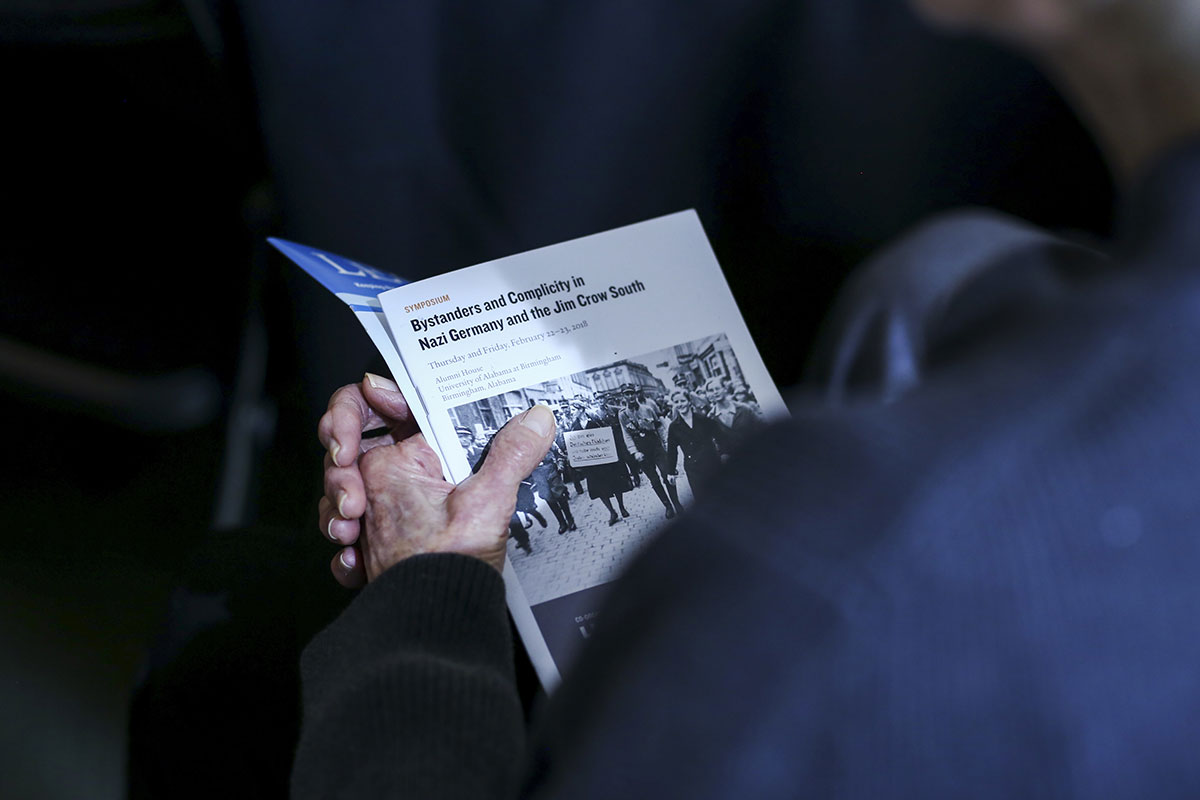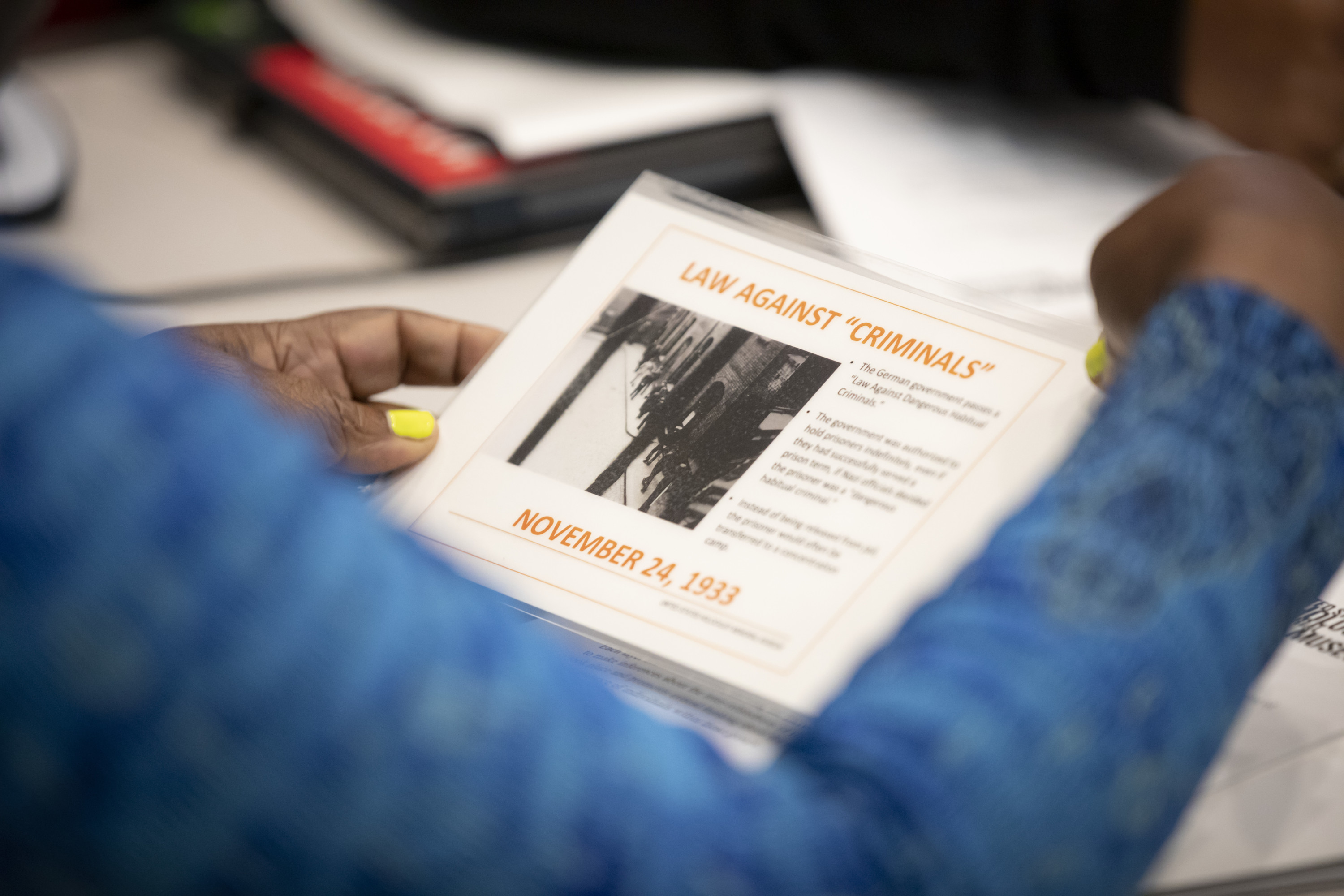Although different in many ways, the histories of racism and antisemitism in Nazi Germany and the Jim Crow America during the 1930s illuminate some universal phenomena that manifested during these distinct historical contexts. Both periods can trace part of their roots to the rise of a new “science” of eugenics, which became an international movement used to give legitimacy to racial policies. Racism, including racial antisemitism, was the core element of Nazi ideology and the driving force behind the Holocaust. Racism also legitimized the continued subjugation and persecution of African Americans long after the end of slavery.
Studying these two histories together is neither meant to equate suffering nor gloss over the uniqueness of each historical period. Instead, it raises critical questions for students, educators, and communities today. What cultural, political, and scientific ideologies did leaders use to justify racial segregation and violence? How and why did ordinary people support, comply with, or resist racist and antisemitic policies in these two systems of targeted oppression? Examining these distinct histories can prompt classroom and community discussions with relevant lessons for today.
Lesson Plans
Racial “Science” and Law in Nazi Germany and the United States: Timeline Extension
This lesson is a case study examining Nazi Germany and the United States during the 1930s, at a time when racism and eugenics were enshrined in law and practice. Students will examine the national and historical contexts in which racism manifested in the two countries, and explore how the pseudoscience of eugenics as well as concerns about “racial purity” found its way into the laws of the United States and Nazi Germany.
Black Americans and the Nazi Olympics
Although different in many ways, antisemitism in Nazi Germany during the 1930s and anti-Black racism in Jim Crow-era America deeply affected communities in these countries. While individual experiences and context are unique and it is important to avoid comparisons of suffering, looking at these two places in the same historical period raises critical questions about the impact of antisemitism and racism in the past and present.
Syllabus
The following syllabus is from a previous Museum's higher education faculty seminar on the topic of Nazism and Jim Crow.
Racial Practice: Theory, Policy, and Execution in Nazi Germany and the Jim Crow South (PDF)
2018 Annual Curt C. and Else Silberman Faculty Seminar. United States Holocaust Memorial Museum
Holocaust Encyclopedia Articles
The following related articles in the Museum’s Holocaust Encyclopedia contain information about the histories of racism and racial antisemitism in Nazi Germany and Jim Crow America. The articles also contain critical learning questions that can be used when discussing article content with students.
- How did the shared foundational element of eugenics contribute to the growth of racism in Europe and the United States?
- What were some similarities between racism in Nazi Germany and in the United States, 1920s-1940s?
- How did different goals and political systems shape racism in Nazi Germany and the United States?
- African American Soldiers during World War II
- Afro-Germans during the Holocaust
- The Nazi Olympics Berlin 1936: African American Voices and “Jim Crow” America
Primary Sources
Artifacts from the time period present students the chance to explore firsthand how racism and antisemitism manifested in Germany and the United States in the 1930s.
African Americans and the Second World War
Experiencing History, a digital learning tool for educators and students, features a collection of 12 sources that allow students to explore the ways in which African Americans responded to the threats posed by the Third Reich and its allies.
Jim Crow and Segregation (PDF)
This six-page teacher’s guide and primary source set from the Library of Congress provides historical background on the Jim Crow Era, suggestions for teachers, as well as a list of additional resources, including relevant primary sources from the Library’s collection.
Dealing and Responding to Jim Crow (PDF)
This three-page resource created by the National Museum of African American History and Culture provides an overview of the Jim Crow era, research questions to consider, and a list of resources, including primary sources housed in the Museum’s collections.
Videos
Survivor Testimony
The following resources provide students the opportunity to hear survivors share their own thoughts on Nazi Germany and Jim Crow America.
Keeping the Memory Alive: Personal Reflections on the Legacies of Racial Violence and Genocide
In this 55-minute video, Riva Hirsch, a Holocaust survivor, and Josephine Bolling McCall, whose father was lynched in Alabama in 1947, offer their thoughts on the personal impact of violent antisemitism and racism in two historical contexts.
Witnessing Jim Crow
A product of the Shoah Foundation’s iWitness program, this module examines the testimonies of survivors of the Holocaust who resettled to the United States and examines the repercussions of racism and race-based prejudice.
Remembering Jim Crow
This radio documentary by American Public Media (2001) features interviews with black and white Americans who reflect on life during the Jim Crow Era. Running a total of 52 minutes, the program is divided into six sections, ideal for use in the classroom. The website includes audio, transcripts, and links to other related resources.
Nazi Olympics: African American Athletes
In this video, athlete John Woodruff, professor David Wiggins, professor Clayborne Carson, and author Jeremy Schaap reflect on the relevance of the achievements of African American athletes at the 1936 Olympics.
Museum Programs
The following videos from past Museum programs on the topic may be used in the classroom to prompt discussion. Learn more about the Museum’s regional campus outreach program in the South, including which topics were discussed, how the conversation was framed, and the list of experts who spoke.





